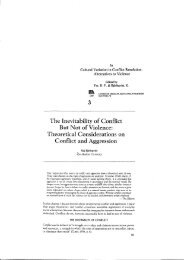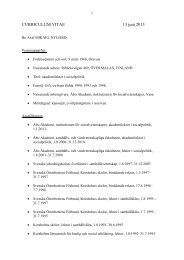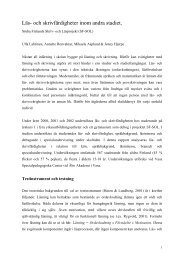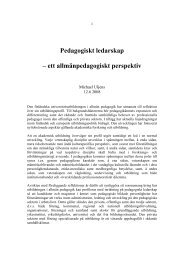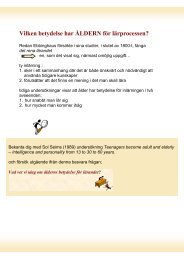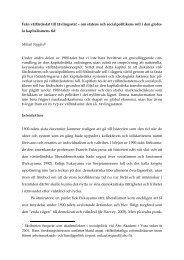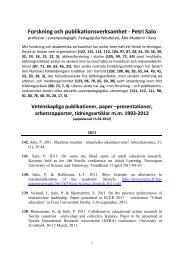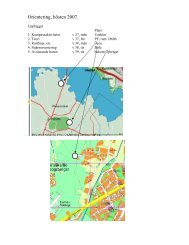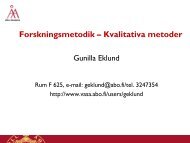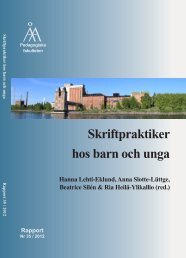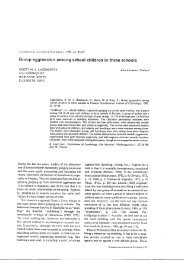Parties, Candidates and Citizens On-Line - Åbo Akademi
Parties, Candidates and Citizens On-Line - Åbo Akademi
Parties, Candidates and Citizens On-Line - Åbo Akademi
You also want an ePaper? Increase the reach of your titles
YUMPU automatically turns print PDFs into web optimized ePapers that Google loves.
The results presented hitherto are only a first step forward in examining the role of<br />
the election oriented information; we also need to know how the voters assessed the online<br />
information. Our analysis shows that few voters obtained very/quite much<br />
information to support their voting decision from party sites (6%), c<strong>and</strong>idate sites (9%)<br />
<strong>and</strong> c<strong>and</strong>idate selectors (14%). 11 A significantly larger share stressed the importance of the<br />
information in the newspapers (26%) <strong>and</strong> in television news <strong>and</strong> current affairs<br />
programmes (28%).<br />
What, then, characterizes the voters that attached great importance to the web<br />
sources? A regression analysis, not reported here for length reasons, showed largely<br />
similar patterns that were detected in Table 8. However, this time, gender proved not to<br />
be a significant predictor. Above all, the voters estimating that they obtained very/quite<br />
much information to support the voting decision from c<strong>and</strong>idates’ <strong>and</strong> parties’ sites <strong>and</strong><br />
c<strong>and</strong>idate selectors tend to have an over-representation of younger voters (18–34 years)<br />
<strong>and</strong> the ones living in urban contexts. Lastly, looking more closely at the age effect, Table<br />
9 shows to what extent different age groups estimated that they received very/quite much<br />
information to support the voting decision from party/c<strong>and</strong>idate sites <strong>and</strong> c<strong>and</strong>idate<br />
selectors compared to traditional media sources.<br />
TABLE 9. The importance attached to different sources by age groups.<br />
Source<br />
18–24<br />
Years<br />
25–34<br />
Years<br />
Age Groups<br />
35–49<br />
Years<br />
50–69 Years<br />
<strong>Parties</strong>’ Websites 33 % 12 % 5 % 2 %<br />
N (48) (174) (285) (403)<br />
<strong>C<strong>and</strong>idates</strong>’ Websites 38 % 17 % 7 % 4 %<br />
N (48) (175) (285) (405)<br />
Web-based C<strong>and</strong>idate selectors 43 % 25 % 15 % 5 %<br />
N (49) (174) (285) (403)<br />
Television News/Current Affairs<br />
Programmes<br />
31 % 33 % 22 % 29 %<br />
N (52) (178) (289) (409)<br />
Newspapers 27 % 23 % 23 % 30 %<br />
N (52) (178) (289) (409)<br />
Note: The figures are percentages of respondents that estimated that they obtained very/quite much<br />
information to support the voting decision from the source in question.<br />
11 <strong>On</strong>ly the respondents that reported that they had voted in the elections were asked to estimate the<br />
information value of different sources.<br />
78



